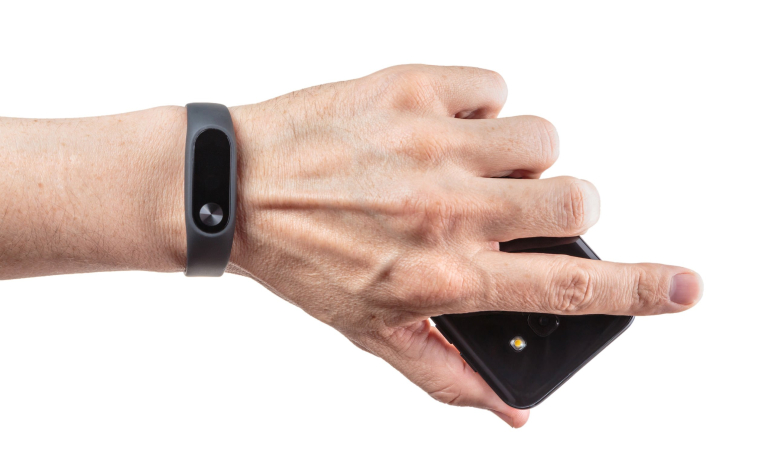Alcohol biosensors suitable for use by everyday drinkers are a step closer, following a positive study of prototype devices published in the journal Alcoholism: Clinical & Experimental Research. Keeping track of alcohol intake can be challenging, given variation in standard drink sizes and impaired awareness as blood alcohol levels rise. Discreet devices that track alcohol levels could help people make more informed decisions about when to stop drinking and could potentially reduce alcohol-related road deaths.
‘Transdermal’ sensors show promise as continuous alcohol sensors appropriate for widespread use
‘Transdermal’ sensors ─ which rest against the skin and measure the amount of alcohol in perspiration ─ show the most promise as continuous alcohol sensors appropriate for widespread use, despite a time delay from when alcohol is consumed to when it can be detected transdermally. Ankle-worn transdermal sensors are already available, but their large and bulky design has limited their use to specific applications in research and the criminal justice system. Recently, advances in electronics and wireless communication have given rise to a new generation of wrist-worn sensors of smaller size and greater wear-ability.
First systematic evaluation of data from the new generation sensors
In the first systematic evaluation of data from the new generation sensors, researchers from the University of Illinois at Urbana-Champaign used laboratory methods to compare prototypes of a wrist-worn device called BACtrack Skyn with AMS SCRAM, an established ankle-worn device. Thirty young adults wearing both devices received either a dose of alcohol intended to bring them up to the legal driving limit (target blood alcohol concentration 0.08%) or a non-alcoholic beverage as a control. Data from the Skyn device (worn on the inside of the wrist) were transmitted via Bluetooth to a custom smartphone app. Participants also provided regular breathalyzer readings until they left the lab.
Transdermal alcohol concentrations lagged behind breath alcohol concentrations
Transdermal alcohol concentrations correlated strongly with breath alcohol concentrations, although with some (as yet unexplained) variability. Encouragingly, both the Skyn and SCRAM devices detected alcohol within 30-minutes of the start of the drinking period. However, as time progressed, the wrist-worn device generally responded faster than the ankle device; although transdermal alcohol concentrations lagged behind breath alcohol concentrations as expected, the lag time was significantly shorter for the wrist-worn devices than with SCRAM. Of note, failure rates for the Skyn prototypes and smartphone app were relatively high (18%-38%) compared with the non-prototype SCRAM devices (2%).
Study takes important first step for everyday drinkers seeking to monitor alcohol intake
By providing preliminary evidence for the validity of the new-generation of wrist-worn sensor, the study takes an important first step for everyday drinkers seeking to monitor their alcohol intake. Although the lag time versus breath alcohol concentrations was modest (averaging around 24 minutes), advanced machine learning algorithms may in future reduce this further. However, the researchers caution that other key challenges remain before the devices are ready for real-world implementation. More reliable and robust prototypes will be required. Also, field testing in large and diverse groups of people drinking variable alcohol doses in real-world conditions will be necessary for comprehensive assessment of the relationship between transdermal and blood alcohol concentrations.
Source:
- Fairbairn, C.E & Kang, D. (2019) Temporal Dynamics of Transdermal Alcohol Concentration Measured via New‐Generation Wrist‐Worn Biosensor. Alcoholism: Clinical and Experimental Research. doi.org/10.1111/acer.14172.
 Razi Berry is the founder and publisher of the journal Naturopathic Doctor News & Review, which has been in print since 2005, and the premier consumer-faced website of naturopathic medicine, NaturalPath. She is the host of The Natural Cancer Prevention Summit and The Heart Revolution-Heal, Empower and Follow Your Heart, and the popular 10 week Sugar Free Summer program. From a near death experience as a young girl that healed her failing heart, to later overcoming infertility and Chronic Fatigue Syndrome and Fibromyalgia through naturopathic medicine, Razi has lived the mind/body healing paradigm. Her projects uniquely capture the tradition and philosophy of naturopathy: The healing power of nature, the vital life force in every living thing and the undeniable role that science and mind/body medicine have in creating health and overcoming dis-ease. Follow Razi on social media: Find her on Facebook at Razi Berry, on Instagram at Razi.Berry, join her Love is Medicine group to explore the convergence of love and health, and find more Love is Medicine podcast episodes here.
Razi Berry is the founder and publisher of the journal Naturopathic Doctor News & Review, which has been in print since 2005, and the premier consumer-faced website of naturopathic medicine, NaturalPath. She is the host of The Natural Cancer Prevention Summit and The Heart Revolution-Heal, Empower and Follow Your Heart, and the popular 10 week Sugar Free Summer program. From a near death experience as a young girl that healed her failing heart, to later overcoming infertility and Chronic Fatigue Syndrome and Fibromyalgia through naturopathic medicine, Razi has lived the mind/body healing paradigm. Her projects uniquely capture the tradition and philosophy of naturopathy: The healing power of nature, the vital life force in every living thing and the undeniable role that science and mind/body medicine have in creating health and overcoming dis-ease. Follow Razi on social media: Find her on Facebook at Razi Berry, on Instagram at Razi.Berry, join her Love is Medicine group to explore the convergence of love and health, and find more Love is Medicine podcast episodes here.

















